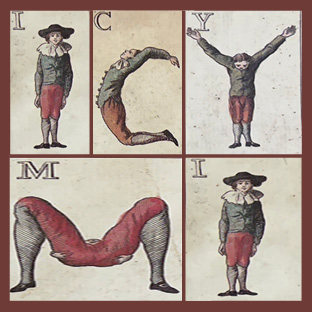What does a business forecast look like when most of your clients are closed or working part-time? It’s time to listen to improv comedians who do this all the time.
Lessons from Improv
In a time when planning with any certainty is off the table, perhaps we could learn from people who are used to working without a script: Improv comedians. How do you prepare for improvisational comedy? Malcolm Gladwell writes that “improv isn’t random and chaotic at all.” In fact, improv performers prepare for their spontaneous shows. Gladwell adds, “Every week they get together for a lengthy rehearsal.” They learn the rules of improv, they find ways to keep a story going, and practice reacting to each other. Gladwell compares this to how a basketball team practices for a game. They don’t rehearse an actual game and try to replicate it play-by-play, they practice the fundamentals of the game like passing, shooting, and dribbling. They try out different plays and combinations that might happen in a game. The players get to know each other and gain a sense of where that player is likely to be on the court. Thomas Middleditch who does an improv special on Netflix with Ben Schwartz says, “over time, you build trust — like, I know that on stage I can essentially fall down and you’re going to be there to make it look like I was completely graceful, and vice versa.”
Thinking small and large at the same time
I was talking to Brian Demaris, who is a leader for the music, theatre and opera program at Arizona State University, about the 2020-21 season. We’ve been designing the ASU season of promotions and posters for the past two years, but this year is quite different. With most of the school operating “remotely” they have to plan a season of shows that will probably be shown on Zoom, but hopefully might be performed outdoors in front of a limited audience. Brian told me, “The set designers are creating sets that could be used on Zoom… or may be used for outdoor “live” performances.”
That stopped me in my tracks. How do you design sets for the up-close intimacy of a Zoom show and use the same ones on a large outdoor stage? That's got to be the ultimate design challenge. Will you end up with sets that look like the “Stone Hedge” props in This is Spinal Tap where the 18-foot props are rendered in 18 inches?
“Everything is on the fly,” says Alfredo Escarcega, the technical director at Arizona State University, School of Music, Dance and Theatre. Alfredo told me that when designing for Zoom or an outdoor performance you need to really focus on a strong concept that may be scaled up or down. It reminded him of when film was first invented. “I’ve prepared by watching the movies of Georges Melies.“ Melies was an innovator in the early days of movies. “Some of these films really look just like theater that is being shot with a crude camera.” Yet, where there are challenges, there are also opportunities. Set designers are rethinking their jobs. It’s not just about the sets, but it’s about the actors on the sets. One solution involves building duplicate sets so they can have the actors perform separately and minimize any spread of Covid19. “We are inventing the wheel as we go,” says Alfredo.
Practice and Trust
For improv comedians and basketball players preparing for the unknown is business as usual. For the rest of us, the uncertainty of the pandemic throws a wrench in our plans for the future. What can we learn from them? First, practice and preparation are critical, it’s not about winging it. Things that look carefree and natural are actually studied and done over and over again until they can be done without giving it a second thought. I always admired how my former pastor could give a sermon without notes and just speak from the heart yet convey such a deeply profound message that was anything but a free-for-all. Then one time he told us about how he prepared for his sermon. He started on Monday, where he read and re-read the scriptures. He went to a study group with other pastors and they shared stories and perspectives about the readings. He thought about the readings and developed his sermon all week long. So that by the time Sunday arrived he had been living with the stories that he wanted to share. He practiced in his head, he practiced in the conversations he had with family, friends and, parishioners. Ultimately, he trusted that the meaning of his sermon would be revealed through this process.
Clarity and Engagement
In March when the pandemic closed down the college where I am an adjunct professor I was forced to change from teaching in a classroom to teaching an online course. I needed to learn how to present classes without the benefits of the live feedback that one relies on when teaching in front of a classroom. It was hard to tell whether anyone was dozing off or hear whether anyone snickered or moaned when I told a bad joke. What I learned was that more preparation was required. I needed to make sure the instructions were really clear. I needed to do a better job of anticipating what might work or not work well in an online presentation. I adjusted deadlines and asked students to submit their work days in advance of the class so I could prepare feedback and include their work in the slides. There was actually more work to do in advance of each online class. Clarity in presenting the content and increasing student engagement are the keys to success in online learning.
Four key takeaways
1. Understanding the big idea/concept is the most important thing. What is the goal of your organization during these times? What is it you want to convey to your clients and supporters? Defining who you are and what you are doing is more important than ever.
2. Practice and preparation are key. You may need to do more of this during a pandemic. When you don’t know the outcome, you have to be prepared for multiple possibilities. You have to sharpen your skillset. This is a good time for more training, not less. I’ve taken two remote-learning courses to improve my online teaching and recently got certified to teach writing intensive courses. Part of preparing for change is to recognize that change is always around the corner. And I try to remember the comment from Jonathan Swift, “There is nothing in this world constant but inconstancy.”
3. Clarity and engagement in communications. As communicators, we are always working to make sure our messaging is clear and resonates with our key audience. This is even more important now when people are separated and often isolated.
4. Challenges will lead to breakthroughs. Opportunities will present themselves. One thing that becomes clear when you talk to Alfredo Escarcega is that the show must go on. Innovation occurs when you have no other choice. Alfredo says, “The theater community is extremely creative. I wouldn’t be surprised if someone comes up with a new breakthrough. This is the right group to be given a challenge. Creative people will definitely find a way to express themselves.”
Back to Insights




